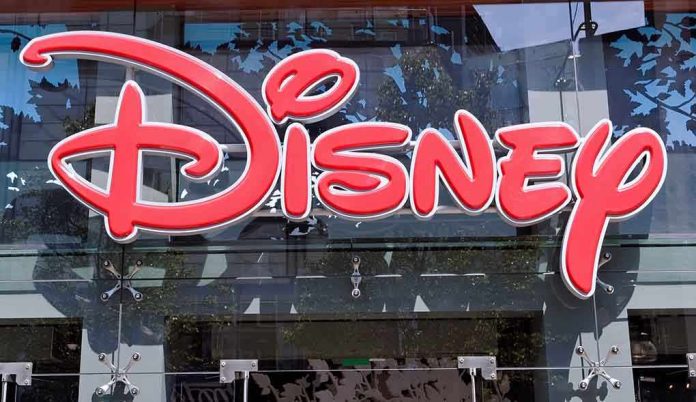
Four deaths in three weeks at Disney World have shattered the illusion of carefree magic, leaving guests and observers questioning how a place built for joy became the site of repeated tragedy.
Story Snapshot
- Four guests died at Disney World resorts within a three-week span, sparking concern and speculation.
- Two deaths at the Contemporary Resort were ruled suicides, one at Fort Wilderness was a medical episode, and the latest at Pop Century Resort showed no signs of foul play.
- Authorities confirm no connection between the incidents, yet the cluster has drawn intense media and public scrutiny.
- Disney’s silence and the unusual frequency of deaths have ignited conversations about guest safety and mental health support.
Disney World’s Unprecedented String of Tragedies Raises Urgent Questions
Walt Disney World, the most visited vacation destination on Earth, has rarely faced a crisis as jarring as the recent streak of guest deaths. In just three weeks, four visitors lost their lives across three separate resorts. The first shock came on October 14, when a 31-year-old woman, Summer Equitz, died by suicide at the Contemporary Resort. Days later, a man in his 60s suffered a fatal medical episode at Fort Wilderness Resort and Campground. The third incident echoed the first—a 28-year-old man, Matthew Cohn, died by suicide at the same Contemporary Resort. On November 2, the pattern broke with the death of a woman in her 40s at Pop Century Resort, found unresponsive and later pronounced dead at a nearby hospital. Authorities have found no evidence of foul play in any of these cases, yet the timing and proximity have left guests and experts unsettled.
The frequency and variety of these incidents are deeply unsettling for a resort that welcomes tens of millions annually and prides itself on safety and spectacle. While individual deaths—whether due to medical emergencies or suicide—are not unprecedented at Disney properties, the occurrence of four in only three weeks is a statistical anomaly. Each resort involved is a staple of the Disney experience: the Contemporary, known for its iconic architecture; Fort Wilderness, a haven for campers; Pop Century, a favorite for families seeking nostalgia. The lack of any link between the victims, confirmed by law enforcement, only sharpens the sense of unease. Media outlets have underscored the rarity of such a cluster, amplifying public concern and speculation about what, if anything, might be driving this surge.
How Disney and Authorities Have Responded—And What Remains Unsaid
The Orange County Sheriff’s Office has moved quickly to rule out foul play, offering brief statements to confirm the facts and quell rumors. In each case, the focus has been on transparency and reassurance: no sign of a broader threat, no evidence that the deaths are connected. Disney itself, however, has remained silent, declining to issue any public comment as the news cycle churns. This absence of a response has not gone unnoticed. For a company whose brand is synonymous with comfort and control, the lack of visible crisis management leaves guests and stakeholders hungry for answers. The tension between law enforcement’s clarity and Disney’s discretion is fueling speculation and anxiety, especially among those who expect the world’s most famous resort to set the standard for guest welfare and communication.
Media coverage has been relentless, with outlets like TMZ, The Independent, and Disney Food Blog providing frequent updates and detailed timelines. Their reports have been consistent: four deaths, three resorts, three weeks, no connection. Yet the sheer volume of coverage ensures that public scrutiny will linger, even as official investigations proceed. The deaths have also sparked conversations about the adequacy of mental health resources at major resorts, the protocols for crisis intervention, and whether Disney should take a more proactive role in supporting vulnerable guests.
Short-Term Shock, Long-Term Consequences for Disney and the Industry
The immediate impact of these tragedies is already visible. Public concern about safety at Disney World has spiked, and some guests are reconsidering their travel plans. Employees and regular visitors report a palpable shift in atmosphere, as the magic of the parks collides with the reality of recent events. Crisis management experts warn that reputational damage, even if temporary, can ripple through bookings and brand loyalty. The broader Orlando tourism sector, closely tied to Disney’s fortunes, is watching for fallout.
Looking further ahead, industry observers predict that Disney will face pressure to review its safety protocols and mental health resources. The clustering of deaths—especially two suicides at the same resort—suggests a need for heightened vigilance and support systems. Academics specializing in hospitality and tourism emphasize the importance of comprehensive guest support, particularly in high-stress environments where expectations run high and realities can disappoint. Other theme parks and resorts are likely to take note, considering their own crisis plans and mental health interventions. The ripple effect could redefine guest welfare standards across the industry, with Disney’s response serving as a benchmark—whether through innovation or caution.
Expert Analysis: What the Cluster of Deaths Reveals About Modern Resorts
Industry experts agree on one point: individual deaths at massive resorts like Disney World are inevitable due to sheer numbers, but a cluster of this magnitude is exceptional. The consensus is that there is no evidence of systemic failure—yet the pattern demands closer scrutiny. Crisis management professionals argue for transparent communication and robust support systems, warning that silence breeds rumor and erodes trust. Mental health authorities advocate for accessible intervention resources, especially in places where visitors may arrive with high expectations and hidden struggles. Academic voices stress that as resorts grow larger and more complex, the challenge of caring for guests extends beyond physical safety to emotional and psychological support.
The situation at Disney World is a stark reminder that no amount of enchantment can insulate a place from tragedy. The juxtaposition of joy and sorrow, fantasy and reality, underscores the importance of vigilance and compassion in environments designed for escape. The next chapter depends on how Disney and the industry as a whole choose to respond—whether by reevaluating policies, strengthening support, or simply acknowledging that even in the happiest places, heartbreak can strike without warning.



